“Sheet metal shearing cuts metal sheets using a straight blade with clean and precise edges for various manufacturing applications.”
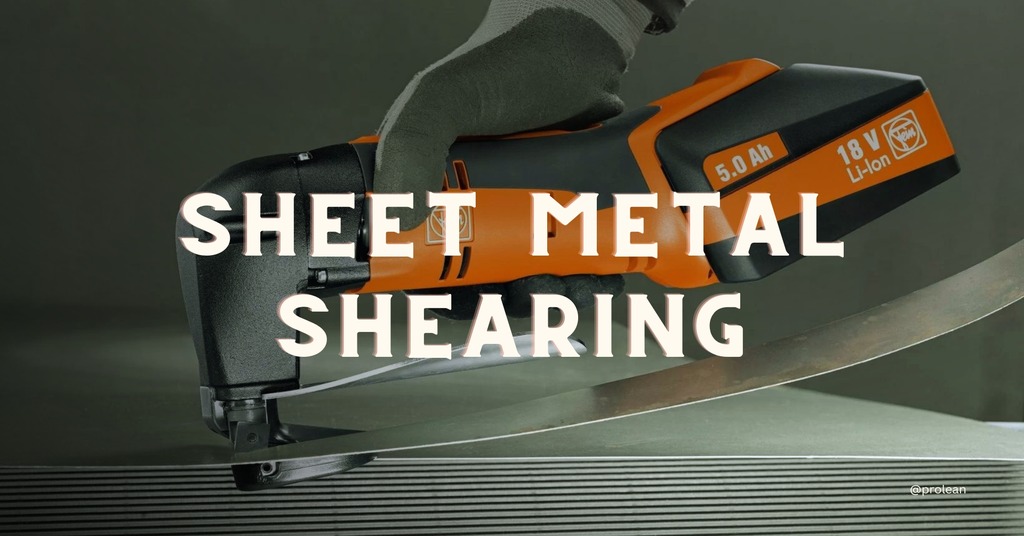
Sheet metal shearing is the most commonly used material in many industries, including automobile, aviation, and home appliances industries. Every sector needs sheet metal parts in specific sizes and shapes that are appropriate for their intended use. Because of these differences in needs, several shear cutting processes have been adopted in the market. These techniques help manufacturers bend sheet metal properly, which is suitable for different uses.
This article will focus on what the shearing process is, the various categories of shearing methods, the procedure of shearing, and some of the things that people may want to know about this manufacturing process will be discussed.
Custom Sheet Metal Shearing: A Brief Detail
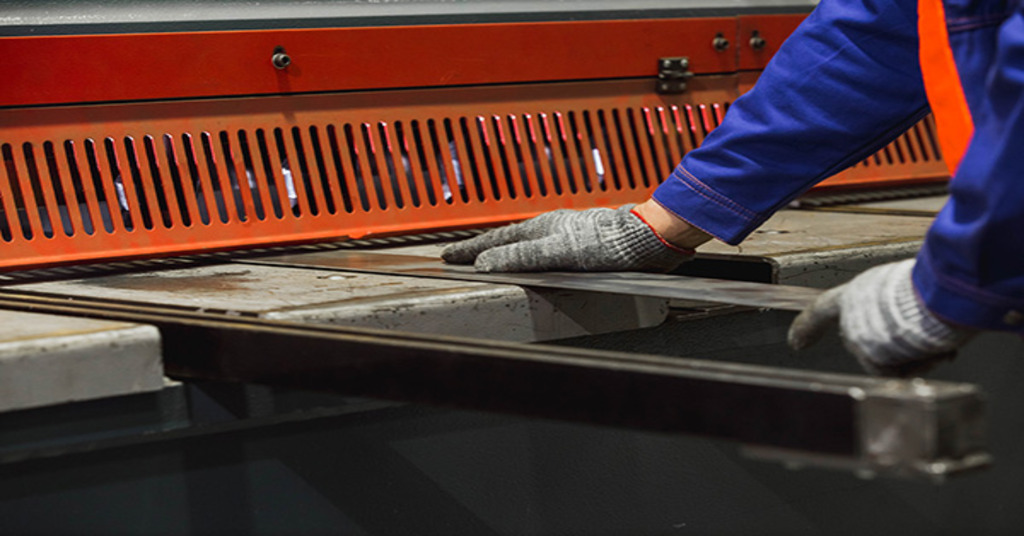
Custom sheet metal shearing
In custom sheet metal shearing, several components are formed from metal sheets and can be utilized to produce different items. Accuracy is essential, and in this case, the shearing process efficiently provides that. Moreover, it does not require excessive heat and does not produce much waste, so many sheet metal manufacturers prefer it. Metal shearing can be considered a very efficient metal-forming method, which is one reason it is preferred over many other sheet metal fabrication techniques. Shearing entails using sharp cutting tools to trim metal sheets to the required sizes. This is done by applying forces that generate a lot of stress, thus making the material shear along a particular line. In operation, the inner surfaces of the metal rub against each other, which leads to a clean cutting.
Shearing offers several benefits. It is a very efficient and all-round technique, which is characterized by high accuracy in terms of cutting. Also, it has low waste output, making it ideal for manufacturing firms who want to cut down on wastage.
Among newcomers in the sheet metal machining industry, there is always a question of whether metal shearing is a hot working process. It’s not. Because it does not involve heating the metal as other working processes do. However, both methods have the same objective of accurately measuring metals, which, at times, needs to be clarified.
Try Prolean Now!
Difference between Sheet Metal Machining vs. Die Cutting
Although both techniques share some similarities, there are quite differences between these processes.
Sheet Metal Shearing
Shearing is a process of cutting sheet metals into the required shapes using linear motion. Two sharp knives are offered on the shearing machine in the shearing process, and the metal sheet is placed between these knives. When the blades are closed, they cut through the metal sheet to provide a straight cut edge on one side. So, it results in a clean edge with no burrs and is often quicker and less costly as compared to die cutting. Shearing is very economical since it does not require making a die and, therefore, is suitable for large sheet metal objects. However, shearing can only be used to make straight cuts rather than to make shapes and designs on fabrics.
Sheet Metal Die Cutting
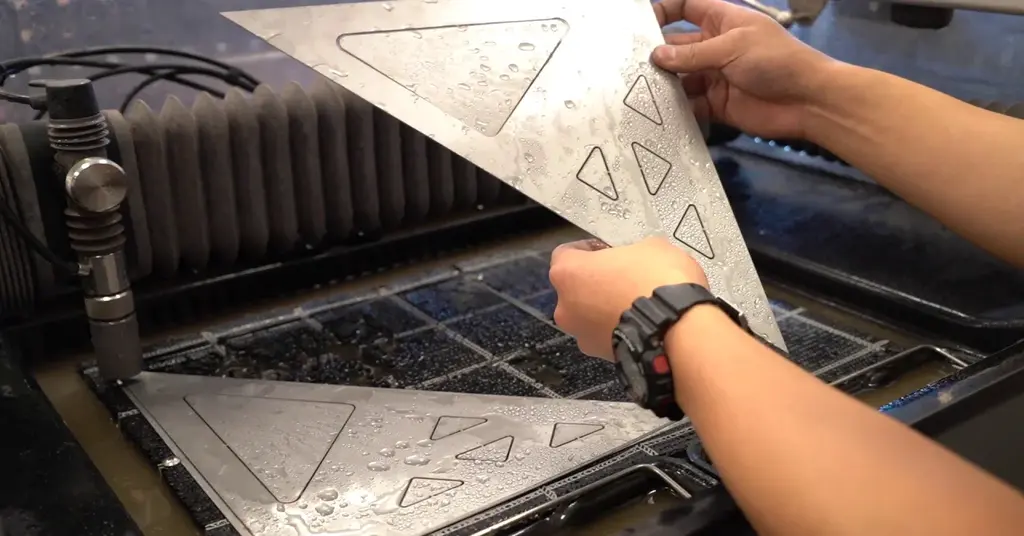
Die content for cutting
Die cutting, on the other hand, uses a die, which is a sharp, hardened tool used to cut metal sheets into the desired shapes. The die is mounted on a machine, and the metal sheet is placed on it. The cutting press is the stage where the die is placed on the sheet, and the force applied to it is enough to cut the sheet to the desired shape. Shearing is less precise and can only make simple shapes than die cutting, but it does not leave a marginally rough edge. Also, die cutting is usually expensive and time-consuming since there is a need to design and store the die. This process is most suitable for small parts of sheet metal that require intricate shapes.
Sheet Metal Shearing Process Steps
We already have outlined the reasons for shearing in the fabrication of sheet metal, so it is now necessary to consider the stages of shearing and how each of them happens.
Setting Up for Shearing
The first shearing process is preparing the shearing machine, which involves cleaning and oiling it. Generally, a shearing machine has an upper blade that remains fixed and a lower blade mounted on a slide. This cutting process is started by placing the metal sheet between these blades.
Clamping
The second central process that is carried out after setting is the clamping process. This assists in obtaining a proper and precise cutting during the operation since the metal sheet is well secured in the shearing tool.
Executing the Shear
Finally, the shearing process starts, and every preparation has been made. The lower blade oscillates while the upper blade does not move as it cuts through the metal sheet with equal accuracy. The shearing machine exerts a lot of force in a straight line along the direction of the cutting edge and usually slightly above the edge of the sheet to cut through the sheet.
Quality Assessment
In shearing, one has to choose the quality of the cut achieved. Shearing is the cutting of metals, and ideally, during shearing, a good shearing operation should produce a clean cut on the metal sheet. The parameters of the cut quality include the blade edge, the material being cut, and the cutting allowance. Supervising such factors helps in the task of maintaining the quality of the outcomes as high as possible.
Finalizing the Cut
The last operation is to cut the upper and lower blades in half and remove the cut piece from the sheet. This process is repeated as often as required to get the desired components.
However, these steps can give a general idea of how shearing is done, although there could be slight differences between manufacturers. If you want to know more about the shearing methods that are applied in Tuolian Metal, then you are welcome to contact us.
Common Clearance Defects in Shearing Processes
Shearing is one of the most significant processes in sheet metal fabrication, and it is mainly applied to cutting straight lines. First, the sheet metal is securely clamped with blank holders. Subsequently, the material is cut using two opposing cutting tools: One is fixed, and the other is moving as a cutting blade. It is also important to note that the position of these tools is set with definite offset parameters in between them.
To achieve the desired cutting accuracy, shearing tools that are sharp enough to cut through various properties and shapes of the sheet metal are required. However, if the maintenance and setup of the shearing machine are not proper, the following problems can arise during the shearing process:
- Burr Formation
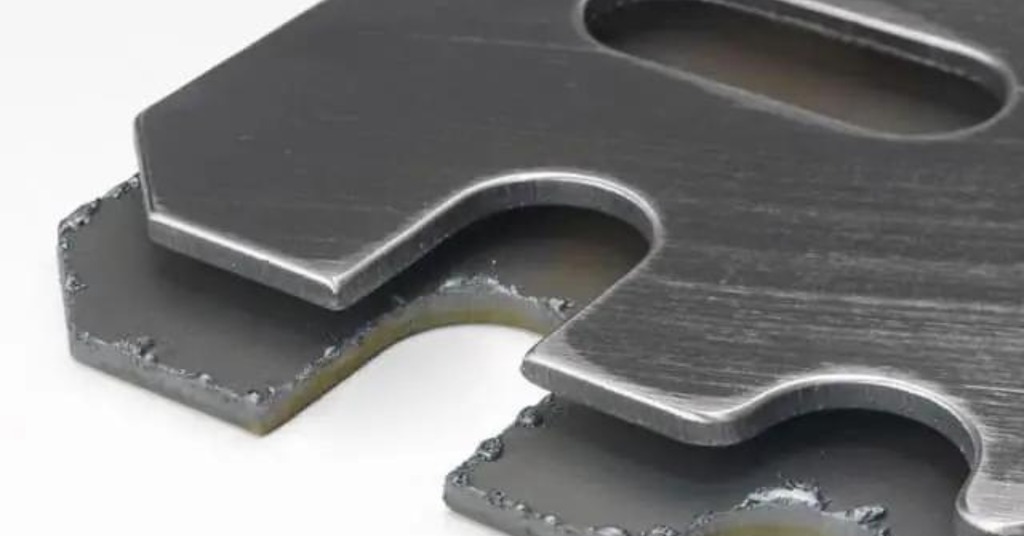
Burr formation In metal part
Burred edges are small, sharp metal edges that remain on the workpiece after the shearing operation is over. This defect is usually a result of blunt or poorly oriented shear blades. The blade gap should also be appropriately adjusted, which is determined by the thickness of the material to be cut. If the gap is too large, it rips the material instead of cutting it, and if the gap is too small, the cuts are not clean, and there is a burr on top of that. As for the clearance, one should read the shear machine manual to ascertain the correct clearance settings.
- Edge Deformation
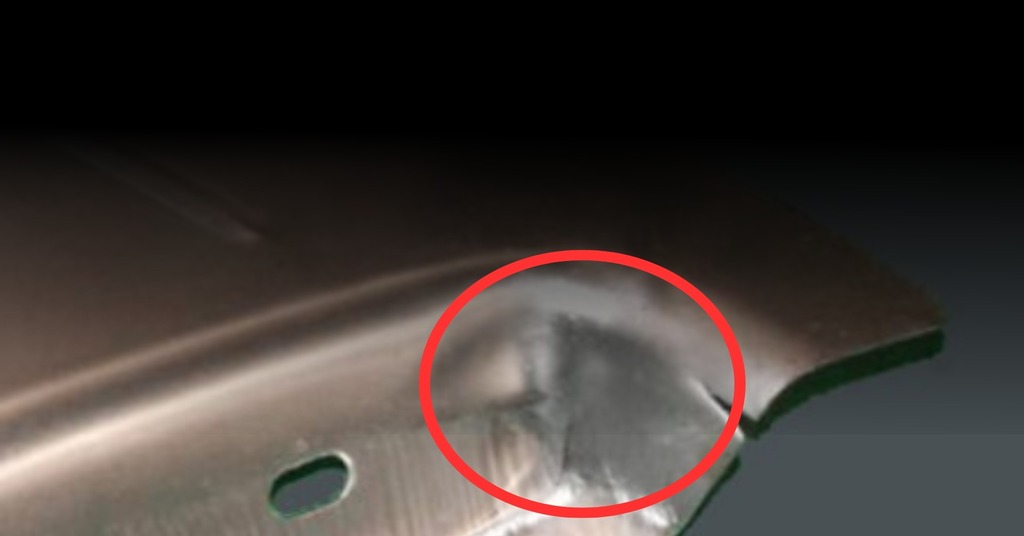
Edge deformation
Other defects that may be attributed to wrong shear gaps or blades that are not sharp enough include deformed edges. Also, the clamp pressures applied inappropriately can lead to this problem, as well as the other factors explained before. Insufficient clamping leads to shifting of the sheet metal during shearing; hence, the edges need to be straight. This defect can be prevented by ensuring that clamp settings are well done and the blades are sharp as they should be from time to time.
- Twisting
Twisting is when the sheet metal pieces come out of the shearing machine with a twist or spiral. This defect is usually a result of taking thin strips or wrong rake angles in the shearing blades. To minimize twisting problems, one has to alter the rake angle depending on the type of sheet metal and the cutting conditions.
- Bowing
Bowing is the procedure of making sheet metal edges to have a bowed shape in which the edges are curved slightly upwards. This defect is most likely to happen on long and narrow sheet metal strips and is bound to be aggravated by wrong rake angles and poor clamping. It is advisable to alter the rake angle and provide adequate support during shearing to reduce bowing.
- Cambering
Cambering results in a change of sheet metal thickness from one width to another width and, as such, can be of convex, concave, or triangular form. This defect is caused mainly by shearing in a direction parallel to the grain direction of the sheet metal or when correct rake angles are not used. Some measures that one can take to avoid coming across cambering problems include changing the rake angle and making sure the sheet metal is well placed when shearing.
All of these can significantly influence the quality and accuracy of the sheared sheet metal parts that will be generated. It is thus recommended that manufacturers ensure they properly maintain their tools and properly set them to minimize these common defects in shearing processes. For profitable outcomes from your project, linking with experienced sheet metal fabrication companies like Prolean, an on-demand China sheet metal fabrication company, is beneficial.
Try Prolean Now!
Benefits of Sheet Metal Shearing
The shearing process offers several benefits. Some common include;
Precision and Clean Cuts
Sheet metal shearing stands out in that it delivers clean cuts with minimal burr, compared to methods like torching or sawing. It entails a sweeping motion that guarantees clean lines, and the sheet does not move at all, making the process very accurate.
Minimal Waste Generation
Another benefit of sheet metal shearing is that it quickly minimizes wastage. Shearing only produces a little scrap metal, as is the case with most other metal fabrication processes. The process effectively cuts the metal sheet at the specific cutting area without creating chips or cutouts, hence minimal wastage.
Energy Efficiency
Shearing is a cold process of cutting and, hence, different from the thermal cutting processes that involve the use of heat. Shearing does not require heat to join the blades and cut the material; instead, force is applied to join the blades and cut the metal, making it energy efficient.
Cost-Effectiveness
As for cost efficiency, sheet metal shearing is a cheap sheet metal fabrication technique, mainly if many identical parts are to be produced simultaneously. The operation is swift; it only takes seconds to cut, dramatically reducing the amount of money charged for the product in the long run.
Adaptability
Sheet metal shearing is one of the most flexible processes that can work with different kinds of metals and their thickness. The blades are easily adjustable depending on the material to be cut, and the adjustment process is relatively simple. It can be done by following instructions from the machines’ manuals.
Standard Methods of Shearing in Metal Working
Several shearing methods can be used in metal fabrication depending on the goal that the engineer or designer wants to achieve. These techniques offer different cutting possibilities, each suited to particular applications:
Straight Shearing
Straight shearing is a fundamental metalworking process, resulting in simple shapes in the fabrication. It consists of consecutive cuts across the metal sheet, making it appropriate for primary operations.
Circular Shearing
Circular shearing is a process of cutting sheet metal in a curved or circular manner with the help of circular cutting tools. This technique makes circular and curved cutouts and shapes on sheet metal materials.
Slitting
Slitting is used when it is necessary to obtain thin coils or thin sheets of sheet metal. Two sets of cuts are made across the length of the metal so that they are equally spaced and of equal thickness. It is widely used to create thin strips as it is effective for their production.
Multi-Slitting
In continuation of the slitting technique, multi-slitting entails cutting a strip in many places at once to produce several thin strips in one operation. This method dramatically increases efficiency and production and is best suited for large-scale production lines.
V-Notching
V-notching, or vee cutting, is a process of cutting v-shaped notches in the corners of sheet metal. This technique is helpful in making joints or increasing the formability of the sheet metal in other subsequent processes.
Step Shearing
Step shearing involves cutting the metal sheet in a stepwise manner at different depths or different levels. This leads to a sequence of stepped cuts which is helpful in manufacturing where such shapes are needed.
Compound Shearing
Compound shearing is one of the most complicated shearing techniques, and it entails cutting the material with different blades. It enables the development of complex forms of contours and shapes, which simple shearing procedures cannot produce. It sometimes uses straight, curved, and angled cuts to achieve the desired design outcome.
When deciding on the proper shearing technique, the manufacturers consider the thickness of the metal, the required shape, and the production specifications. Every technique has its benefits depending on the application in the metal fabrication processes.
Preventative Measures to be Taken to Prevent Shearing Defects on Sheet Metal
Shearing is one of the most critical operations in metal fabrication since it enables the creation of straight-edged material to the required length. To prevent the material from developing some defects when shearing it, the following techniques are recommended:
Understand Your Machine:
Shearing machines are of different models; therefore, every model has its design, working principle, and capacity. The operators should have adequate knowledge of how a particular machine works and the efficiency of the machine in accommodating various types of sheet metals.
Regular Inspection:
Shearing is a very intensive process, and all the components of the machines that are used in shearing are under a lot of stress. To reduce the formation of defects, it is recommended that the shearing machine be checked often. Search for any signs of damage on the machine, whether the machine is well lubricated, and other factors that may influence the performance of the machine.
Maintain Sharp Blades:
The condition of the blade of the machine used in shearing plays a vital role in the quality of edges. Make sure the blades are positioned and honed properly before the shearing process commences. Ensure the blades are checked and sharpened at the right time for the best shearing outcome.
Immediate Response to Defects:
As for the shearing process or the workpieces that are being produced, if there are defects or irregularities, the machine has to be stopped. Even more utilization of a problematic machine worsens the situation even further. Eliminate all the mistakes identified to avoid the vices and enhance the smooth running of the efficient.
Try Prolean Now!
Final Thoughts
Shearing, blanking, and piercing are some of the procedures that are used in the cutting of sheet metal, some of which are integrated by the fabricator to produce a single part. These techniques should be understood as their strengths and weaknesses and the kind of projects that should employ them to develop proper plans for sheet metal projects.
For the best results, contact Proleantech. Our modern equipment and staff ensure fast and efficient production and high-quality sheet metal products according to your specifications. You can call us now to learn how we at Prolean can assist you with the best sheet metal service to fulfill your project needs.
FAQ’s
Q1. How precise are the cuts that are made by shearing?
Shearing can give thin and clean edges with little or no burrs and typically within ±0. The following was agreed upon: the minimum thickness of the layer to be deposited was 1mm (0. 004 inches). This method is suitable for making clean edges and straight cuts that are suitable for use in industries. However, if the precision is higher or forms are complex, some extra finishing or other manufacturing processes are necessary depending on the required characteristics.
Q2. Is shearing applicable to all types of metals?
Shearing ordinarily applies to almost all types of metals, such as stainless steel, aluminum shearing, and mild steel. However, the suitability may be restricted by the thickness and hardness of the metal used in the process. Thicker or harder metals may need special shearing tools or methods of shearing the metal.
Q3. Is shearing a noisy process?
The use of shearing machines is also characterized by a lot of noise, more so when working on thick materials. Minimizing the effects on operators; that’s why safety and proper hearing protection should be the priority.
Q4. Can shearing be automated for parts piercing?
Yes, shearing processes can be automated with the help of CNC machines, which are Computer Numerical Control machines. These advanced systems can be programmed to perform precise and repetitive cutting operations. Therefore, it reduces the amount of manual work and reduces extra costs.




0 Comments